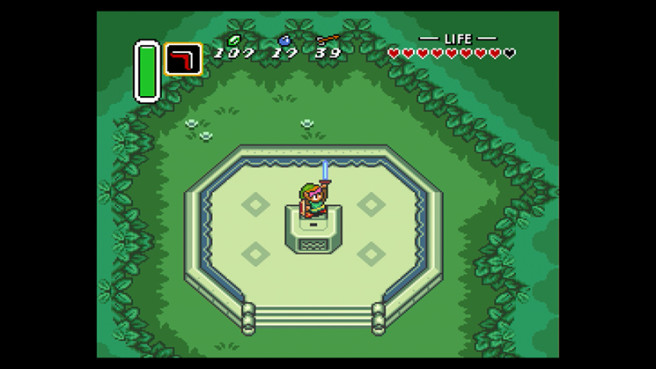Nintendo on Zelda: Link to the Past – scrapped idea, working with SNES, Master Sword importance, more
It’s not often that Nintendo talks about past Zelda games. Right now, all eyes are focused on Breath of the Wild. But in this month’s issue of RetroGamer, the magazine caught up with Zelda: A Link to the Past director Takashi Tezuka and script writer Kensuke Tanabe to look back on the classic game.
Most of the comments we have are from Tezuka, who talked about the game’s structure, scrapped idea, and more. Tanabe also chimed in with Tezuka at one point to talk about the advantages of working with the SNES at the time.
Head past the break for a rundown of Tezuka and Tanabe’s comments.
On how the structure was driven by the concept of the game…
“When we were starting the project, we experimented to see if it was possible to include a multi-world structure into the game. Our plan was that events in the hub world would have an effect on the other, overlapping worlds. In the end, we decided it would be best for us, the developers, as well as for players to have this as two worlds; one light, one dark. We felt the best way to represent this overlap of light and dark, and to represent the changes between them, was to use the same slanted top-down view used in the original The Legend of Zelda game.” – Tezuka
On a scrapped combat idea…
“At the start of development, we wanted players to be able to freely choose which weapons to hold, not just the sword and shield. We also thought about having these weapons combine, say for example, having the Bow & Arrows set to the A Button and a Bomb to B Button so that when you use them together (i.e. press both the buttons), Link would shoot an arrow with a bomb attached. In the end we didn’t use this in A Link To The Past, as Shigeru Miyamoto requested that Link always have the sword equipped. We were able to implement this system in the next title, Link’s Awakening, though.” – Tezuka
On working with the SNES…
“The new hardware allowed us to do things we hadn’t been able to until that point. I’d only been drawing four-color pixel images up until then, so even simply just increasing the number of colors available to use to 16 or 256 colours, as well as being able to use high quality sounds, was really exciting for me.” – Tezuka
“Figuring out how best to effectively reflect the features of the hardware into a game is always a challenge that Nintendo’s game designers face, and not limited to this game. For me, who’d studied visuals at university, being able to use two ‘animation cells’ and having the possibility to scroll them separately was a huge deal.” – Tanabe
On how technical issues were rare…
“Our game designers had a pretty good idea of what could be done on the hardware back then, so I don’t believe we had any unexpected implementations. Having said that, though, we had a long battle with the memory size, and I remember very clearly that the engineering team worked extremely hard to optimize it.” – Tezuka
On the opening, story, and Master Sword…
“In A Link To The Past, the game starts with a dark, rainy scene, with Link being just a regular village boy who, in the same situation as the player, doesn’t really know what’s going on, but just follows Princess Zelda’s voice and works to save her. However, in doing this he somehow ends up becoming an outlaw. We wanted players to start feeling excited and wonder what will happen next. We didn’t intend to make players feel like the game was going to end there.” – Tezuka
“We didn’t have Link start out as a sword-wielding hero right from the start, because we had already decided at the beginning of the project that we wanted him to awaken as a hero when he pulls out the Master Sword. We did make a number of adjustments to the placement and ordering of the weapons and items so that we could get the ideal flow for the game, no matter the player or play style. We thought that players would form an emotional connection with Link as they play and by the time he ultimately becomes a hero, it would just be natural that he can use a variety of different weapons.” – Tezuka
“Kensuke Tanabe already had an idea for a truly memorable hero-awakening scene when we started this project. In the midst of a forest, with light filtering down through the leaves, the sword stood waiting for someone worthy of wielding it to arrive (the illustration on the Japanese package shows this). Link draws the sword out as the light trickles through the leaves.” – Tezuka
“We also decided then that the Master Sword was a sword that alone holds the power to repel evil, and I suspect this is why it continues to carry such an important role in the rest of the series.” – Tezuka
“It’s at this point that the game’s real battle starts. Our main aim was to show the birth of a hero in a scene fitting of The Legend Of Zelda, and overlap this with a sense of achievement for the player that they have been recognized as a hero after having overcome many challenges. What we had decided on from the start was that Link would first become a hero in the Light World and defeat the first boss. From that point is when his battle to defeat the real enemy, Ganon, in the Dark World begins.” – Tezuka
